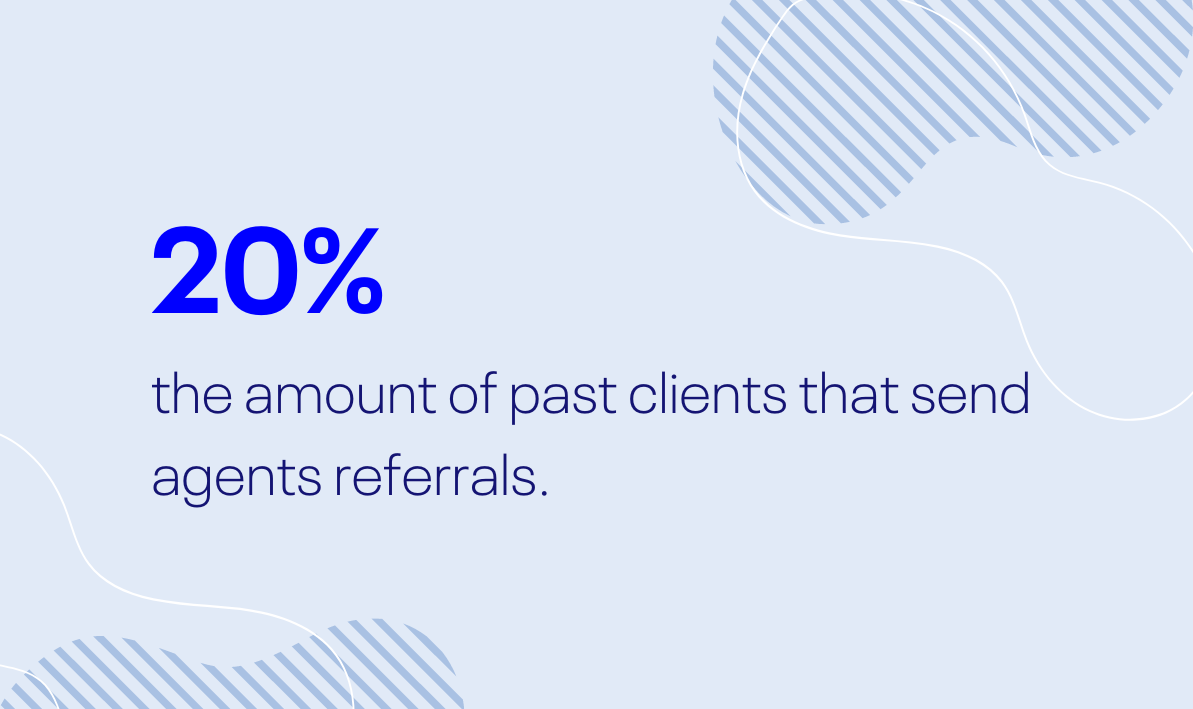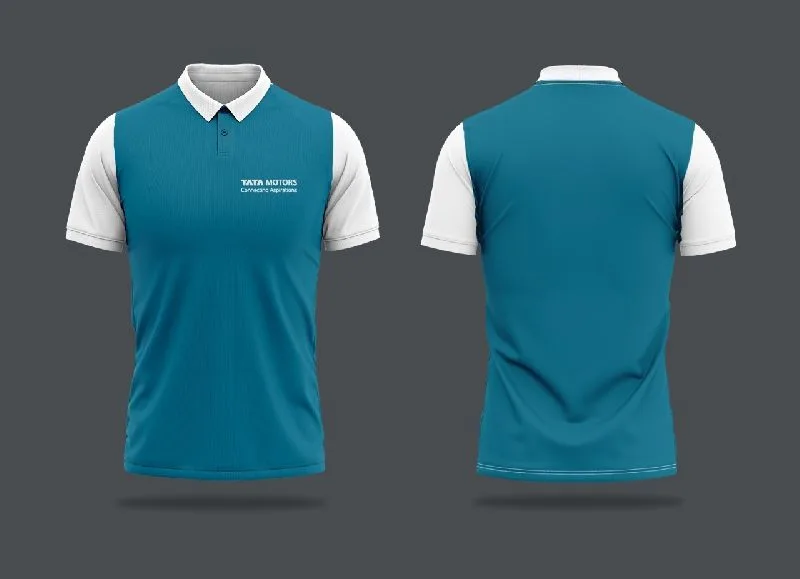In today’s competitive market, businesses constantly seek innovative ways to drive sales, enhance relationships, and build long-term brand loyalty. Dealer loyalty programs stand out as an effective strategy to achieve these goals. Here’s why businesses should consider implementing them:
Strengthening Relationships and Engagement
Dealer loyalty programs foster trust and engagement between businesses and their dealers. By offering tailored rewards and incentives, companies can strengthen relationships and motivate dealers to prioritize their products. According to a HubSpot report, 93% of companies with a loyalty program experience increased customer retention, and this concept is equally relevant in B2B settings.
Moreover, dealer loyalty programs create a sense of belonging among dealers. Regular communication, training sessions, and exclusive networking opportunities further enhance their loyalty. These programs empower dealers to feel like vital partners rather than just intermediaries in the supply chain.
Driving Sales Growth
When dealers feel valued, they are more likely to push your products aggressively, resulting in increased sales. For example, Coca-Cola’s dealer incentive programs offer tier-based rewards to motivate consistent performance, leading to higher sales across territories. Forbes highlights that businesses using loyalty programs see a 25-95% increase in sales through repeat customers.
Additionally, loyalty programs can include exclusive offers for high-performing dealers, such as early access to new products, larger margins, or special promotions. These incentives encourage dealers to exceed targets and create a win-win scenario for both parties.
Offering Competitive Advantage
A well-designed loyalty program sets your business apart in a crowded marketplace. Companies like Samsung have created dealer-specific programs where participants earn points redeemable for digital rewards or exclusive discounts. This approach helps secure dealer loyalty, especially in industries prone to competition.
In competitive sectors such as electronics or FMCG, loyalty programs can be a decisive factor for dealers when choosing a supplier. Providing access to tailored marketing support, co-branded advertising materials, or customer insights can enhance your value proposition.
Leveraging Data for Insights
Dealer loyalty programs generate valuable data about purchasing patterns, preferences, and behaviors. Companies can leverage this information to make informed decisions on inventory, marketing strategies, and dynamic pricing. Statista’s research indicates that 79% of businesses using analytics tools from loyalty platforms see significant operational improvements.
This data can also help businesses identify trends and predict future demand, ensuring optimal stock levels and reducing wastage. Real-time analytics allow companies to respond quickly to changes in the market, maintaining a competitive edge.
Enhancing Dealer Retention with Dealer Loyalty Program
High dealer churn rates can destabilize supply chains and negatively impact sales. Implementing a dealer loyalty program reduces this risk by fostering long-term partnerships. Entrepreneur’s analysis shows that businesses with loyalty programs reduce churn by up to 18%.
Retention-focused loyalty programs often include personalized engagement strategies. For instance, celebrating milestones like anniversaries or performance achievements strengthens emotional connections with dealers. Such initiatives ensure a steady and reliable network of partners.
Opportunities for Innovation
Engaged dealers are more likely to provide constructive feedback, which can fuel innovation in product design, marketing, and distribution strategies. Loyalty programs thus act as a two-way communication bridge, helping businesses adapt and grow.
For example, businesses can introduce gamification elements, such as leaderboards or tier-based rewards, to make participation enjoyable. Dealers actively participating in these programs often contribute creative ideas that enhance overall business performance.
Read More: Top 10 Disctributor Loyalty Programs In India
How Companies Are Succeeding With Dealer Loyalty Program
Mahindra & Mahindra’s loyalty initiative rewards dealers for achieving sales targets and promoting specific products, creating a culture of motivation and collaboration. Similarly, Ford’s Partner Recognition Program aligns sales and service quality by incentivizing dealers who achieve exceptional customer satisfaction scores.

Hindustan Unilever’s Shakti Program is another great example. By rewarding rural distributors, the program ensures product availability in underserved regions while incentivizing sales growth. Phillips Lighting’s Rewards Program focuses on sustainability by rewarding dealers for selling energy-efficient products, promoting eco-friendly practices while boosting sales.
Why Statistics Support Loyalty Programs
Harvard Business Review highlights that loyalty programs deliver a 2x ROI when integrated effectively into business models. Statista’s survey shows that 67% of businesses with loyalty platforms see improved relationships with their channel partners. Additionally, HubSpot’s data reveals that loyal channel partners can contribute up to 80% of a business’s revenue.
Customer satisfaction also sees a significant boost. Entrepreneur’s research indicates a 35% improvement in customer satisfaction when dealers are incentivized, as they are more committed to delivering exceptional service.
How B2B Loyalty Platforms Amplify Impact With Reseller Loyalty Programs
To maximize the impact of dealer loyalty programs, businesses can utilize B2B loyalty platforms. These platforms enable seamless management of incentives, tracking of dealer performance, and personalized reward structures. Platforms like Almonds AI have successfully helped brands like Coca-Cola and Dabur streamline their dealer engagement initiatives.
Advanced platforms often integrate with CRM tools, providing end-to-end visibility into dealer activities. Features such as automated point calculations, instant reward redemptions, and AI-powered recommendations ensure that loyalty programs remain efficient and impactful.
Implementing a Dealer Loyalty Program Successfully

To create an effective dealer loyalty program, businesses must:
- Set clear objectives: Define goals such as increased sales, improved retention, or enhanced dealer satisfaction.
- Tailor rewards: Align rewards with dealer preferences, such as travel incentives, gadgets, or cash benefits.
- Maintain transparency: Communicate program rules clearly and allow dealers to easily track their progress.
- Continuously improve: Regularly analyze program performance and adapt strategies based on dealer feedback and market trends.
Use Cases of Dealership Loyalty Programs in India
Dealership Loyalty Programs in India have evolved into strategic tools that drive sales, strengthen dealer relationships, and create long-term brand advocacy. Several leading Indian companies have successfully implemented Distributor Loyalty Programs to ensure dealer engagement, improve brand preference, and maximize sales growth.
1. Tata Motors’ Dealer Incentive Program
Tata Motors has a structured Dealership Loyalty Program that rewards dealers based on various performance metrics, including vehicle sales, service quality, and customer satisfaction scores. Dealers who meet sales targets receive cashback incentives, marketing support, and exclusive access to new models. Additionally, Tata offers training programs to help dealers improve customer interactions and after-sales service quality, ensuring long-term engagement and loyalty.
💡 Why It Works:
- Performance-based incentives drive higher dealer motivation.
- Exclusive benefits for top dealers increase brand preference.
- Training ensures standardized customer service across dealerships.
2. Asian Paints’ Privilege Club for Dealers & Painters
Asian Paints runs one of the most successful Distributor Loyalty Programs in India, targeting both dealers and painters. The program offers rewards in the form of redeemable points, cashback, and international trips for high-performing dealers. Additionally, Asian Paints provides training sessions, product sampling, and digital tools to help dealers grow their business.
The loyalty program also includes incentives for painters who use Asian Paints products, ensuring that dealers have a steady demand from end users.
💡 Why It Works:
- Multi-tiered rewards drive higher dealer and painter engagement.
- Training and digital tools help dealers market products better.
- Exclusive benefits like cashback and trips keep dealers loyal.
Read More: Top Painter Loyalty Programs in India Driving Engagement & Brand Loyalty
3. Ultratech Cement’s ‘Ultratech Building Solutions’
Ultratech Cement has developed a Dealer Loyalty Program that rewards retailers, contractors, and masons based on their purchases and referrals. The program is designed to provide financial incentives, business growth support, and training programs.
One of its key features is tier-based rewards, where top-performing dealers get priority delivery, credit extensions, and business development grants. The program also provides digital platforms for dealers to track their rewards, manage orders, and receive industry updates.
💡 Why It Works:
- Encourages long-term partnerships with dealers through structured rewards.
- Provides financial benefits that support dealer business growth.
- Digital tracking enhances transparency and dealer engagement.
4. Hero MotoCorp’s Dealer Engagement & Incentive Program
Hero MotoCorp, India’s largest two-wheeler manufacturer, has implemented a Dealership Loyalty Program to ensure consistent dealer engagement and brand preference. Dealers earn incentives based on sales volume, customer service ratings, and after-sales performance.
Hero also offers marketing support, exclusive vehicle promotions, and access to limited-edition models for its best-performing dealers. Some top dealers receive all-expense-paid trips and extra financial incentives for maintaining high sales growth.
💡 Why It Works:
- Performance-based incentives boost dealer productivity.
- Exclusive vehicle promotions create a competitive advantage.
- Rewards like international trips enhance dealer satisfaction.
5. Havells Club Royale for Electricians & Dealers
Havells India has built a robust Distributor Loyalty Program known as Club Royale, targeting both electricians and dealers. The program incentivizes dealers for their purchases and helps them earn loyalty points, which can be redeemed for cashback, gift vouchers, and exclusive training programs.
Additionally, Havells offers top-tier dealers business expansion opportunities by providing additional credit facilities and marketing support. The brand also runs engagement programs that educate dealers about new products and their USPs.
💡 Why It Works:
- Reward-based engagement helps retain top-performing dealers.
- Training sessions enhance product knowledge, leading to better sales.
- Loyalty points and cashback encourage higher dealer participation.
6. Dabur’s Channel Loyalty Program for Distributors & Sub-Stockists
Dabur has introduced a Distributor Loyalty Program to ensure that sub-stockists and distributors remain loyal to its brand. This program includes financial incentives, access to special pricing schemes, and additional marketing support for high-volume sellers.
Dabur also rewards distributors who achieve specific sales targets by offering them exclusive access to promotional campaigns and advertising co-funding. The initiative ensures that Dabur products maintain a strong presence in retail outlets.
💡 Why It Works:
- Exclusive access to promotions ensures strong brand presence.
- Additional marketing support helps distributors increase sales.
- Tier-based benefits encourage higher purchasing volumes.
7. JSW Cement’s Dealer Engagement & Growth Program
JSW Cement runs a Dealer Loyalty Program designed to create a strong bond between the brand and its dealers. The program includes financial incentives, performance bonuses, and co-branded marketing support.
JSW also organizes events where top dealers are recognized and rewarded for their contributions to the company’s growth. Additionally, the brand provides digital tools that help dealers track sales, receive industry updates, and manage orders.
💡 Why It Works:
- Exclusive incentives drive dealer performance.
- Recognition programs create brand loyalty.
- Digital tools improve dealer efficiency and sales tracking.
8. Bajaj Auto’s Channel Partner Rewards Program
Bajaj Auto has implemented a Dealership Loyalty Program where dealers are rewarded based on vehicle sales, service quality, and brand engagement. Dealers who consistently perform well receive access to special financing programs and higher margins on specific models.
Additionally, Bajaj provides sales training, service workshops, and customer engagement strategies to help dealers improve their business performance.
💡 Why It Works:
- Performance-based rewards keep dealers motivated.
- Training programs improve sales efficiency.
- Special financing incentives increase dealer profitability.
9. Marico’s Distributor Engagement Program
Marico, known for brands like Parachute and Saffola, has a Distributor Loyalty Program that incentivizes its channel partners based on their purchase volumes and brand engagement. The program provides digital platforms for tracking sales, redeeming rewards, and receiving business insights.
Marico also offers special seasonal incentives to encourage bulk purchases during high-demand periods. This ensures that distributors remain engaged with the brand throughout the year.
💡 Why It Works:
- Digital tracking enhances distributor transparency.
- Seasonal incentives drive consistent engagement.
- Performance-based benefits encourage higher purchases.
The Path Forward For Dealer Loyalty Program
Dealer loyalty programs are no longer optional in today’s fast-paced business environment—they’re essential. By fostering stronger dealer relationships, driving sales, reducing churn, and leveraging data-driven insights, businesses can achieve sustained growth. Investing in a robust B2B loyalty platform ensures your dealer loyalty program is both effective and scalable, driving measurable results over time.
With the right approach, dealer loyalty programs can transform not just your business outcomes but also the way your brand is perceived in the market—making it a trusted partner for growth and success.
Frequently Asked Questions
Companies prefer dealer loyalty programs very much recently. Here are some of the frequently asked questions about dealer loyalty program
1. What is a dealer loyalty program?
A dealer loyalty program is a strategic initiative designed to reward dealers for their sales performance, loyalty to the brand, and consistent engagement with the company’s products or services.
2. Why should businesses invest in a dealer loyalty program?
A dealer loyalty program strengthens relationships with dealers, improves sales performance, and encourages dealers to prioritize your brand, ensuring long-term dealer loyalty protection and retention.
3. What benefits do dealers gain from a loyalty program?
Dealers gain financial rewards, exclusive perks, tiered benefits, recognition, and personalized incentives that enhance their overall experience and make them more committed to the brand.
4. What are the core elements of a successful dealer loyalty program?
- Tier-based incentives
- Dealer loyalty protection mechanisms
- Personalized offers
- Real-time performance tracking
- Seamless digital platforms
5. Which industries benefit most from dealer loyalty programs?
Industries like FMCG, automotive, construction materials, electronics, and pharmaceuticals see significant benefits from implementing a dealer loyalty program due to their extensive dealer networks.
6. How do dealer loyalty programs ensure dealer loyalty protection?
By offering consistent rewards, transparent incentive structures, and recognition, these programs protect dealer loyalty by minimizing the risk of dealers shifting to competitors.
7. What types of rewards are effective in dealer loyalty programs?
Effective rewards include cashback, exclusive discounts, loyalty points, premium gifts, branded merchandise, recognition awards, and tailored dealer loyalty protection perks.
8. How can a dealer loyalty program improve sales and revenue?
By incentivizing dealers to increase their purchase volume, cross-sell products, and remain loyal, a well-designed dealer loyalty program drives higher sales and long-term revenue growth.
9. What role does technology play in dealer loyalty programs?
Technology powers dealer loyalty programs by enabling automation, real-time tracking, data analysis, and seamless communication through digital portals or mobile apps.
10. What are common challenges in implementing a dealer loyalty program?
Challenges include low dealer engagement, complex reward structures, lack of dealer loyalty protection measures, and ineffective tracking systems.
11. How can businesses ensure the sustainability of their dealer loyalty program?
Sustainability is achieved by keeping the program simple, aligning it with dealer needs, offering valuable rewards, and continuously improving the program using dealer feedback.
12. How does dealer loyalty protection improve business outcomes?
Dealer loyalty protection strategies help retain high-performing dealers, prevent them from switching to competitors, and foster stronger partnerships that result in consistent sales growth.
13. How can businesses measure the success of a dealer loyalty program?
Success is measured through KPIs such as increased dealer retention rates, higher sales volume, better dealer satisfaction scores, and improved program engagement metrics.
14. What makes dealer loyalty programs cost-effective?
Using scalable technology, tailored rewards, and data-driven insights, businesses can implement cost-effective dealer loyalty programs that yield high ROI without overspending.
15. Can a dealer loyalty program be customized for different markets?
Yes, dealer loyalty programs can be tailored to address specific regional preferences, cultural nuances, and market dynamics, ensuring relevance and greater dealer loyalty protection.
16. What is the importance of analytics in dealer loyalty programs?
Analytics plays a vital role by tracking dealer performance, identifying engagement trends, optimizing reward distribution, and ensuring that dealer loyalty protection measures are effective.
17. How do dealer loyalty programs address competition in the market?
By offering exclusive rewards and fostering strong relationships, these programs create dealer loyalty protection barriers, making it harder for competitors to lure dealers away.
18. What are the long-term advantages of dealer loyalty programs?
Dealer loyalty programs build trust, ensure dealer retention, improve brand visibility in the market, and establish a competitive edge through effective dealer loyalty protection and rewards.
19. What is the goal of a dealer or reseller loyalty program?
The main goal is to create stronger, longer-term relationships with dealers and resellers by rewarding them for consistent sales, brand advocacy, and loyalty. It helps your brand become a priority for your partners—not just another option on the shelf.
20. How does a reseller loyalty program actually work?
Resellers earn points for every eligible sale or action—like uploading invoices, attending training, or promoting new products. These points can be redeemed for rewards like digital vouchers, products, or even travel experiences. The key is to align rewards with what motivates your partners.
21. Are loyalty programs only for large dealer networks?
No. Whether you have 50 or 5,000 resellers, a well-designed loyalty program can bring structure, motivation, and measurable growth. For smaller brands, it’s actually a great way to stand out and build mindshare among your dealer base.
22. Are loyalty programs only for large dealer networks?
Modern loyalty platforms allow you to track sales data, invoice uploads, QR code scans, or manual submissions. You get real-time dashboards to monitor who’s performing, redeeming, and engaging—no spreadsheets or guesswork.
23. What’s one common mistake to avoid in reseller loyalty programs?
Overdesigning the program. Complex rules, delayed rewards, or unclear communication can frustrate dealers. Keep the structure simple, the rewards desirable, and the process transparent from day one.
24.What are Car Dealership Loyalty Programs?
25. How do Dealer Rewards Programs benefit dealerships?
-
These programs increase customer retention, boost sales, and enhance brand loyalty by offering incentives like discounts, special offers, or exclusive services to loyal customers.
26. Why should businesses implement Car Dealer Loyalty Programs?
27. What types of rewards can be offered in a Dealer Loyalty Program?
-
-
Rewards can include discounts, free services, loyalty points, or exclusive offers, tailored to encourage customers to return and engage with the dealership regularly.
28. How do Car Dealership Loyalty Programs improve customer retention?
2,673 Post views



























